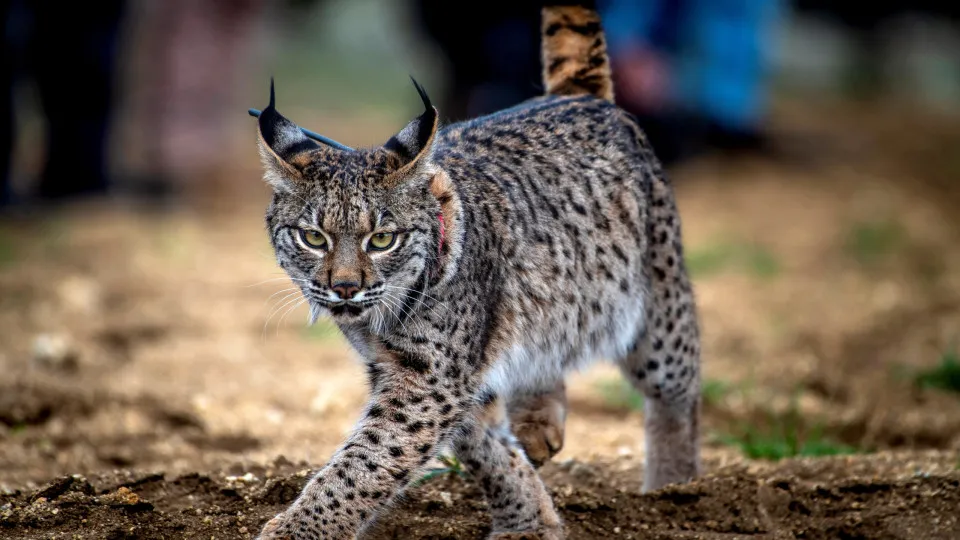
The Iberian lynx captive breeding program celebrates its 20th anniversary in 2025, marking two decades in which 835 cubs were born, 640 survived weaning, and 424 were released into the wild across various points of the Iberian Peninsula, as announced by the ICNF, which oversees the recovery and conservation projects for this species in Portugal that faced the brink of extinction at the start of the century.
The captive breeding of lynxes served as the foundation for the Iberian lynx recovery and conservation project, which has now become an international success story.
The Iberian lynx population increased from fewer than 100 animals in 2002 to 2,401 by 2024, based on the annual census conducted by authorities in Portugal and Spain.
There are currently five captive breeding centers for the Iberian lynx on the Iberian Peninsula, including one in Silves, Portugal.
Data released today by the ICNF highlights that “the Ex-Situ Conservation Program of the Iberian lynx reached one of its significant milestones in 2025: the birth of 62 cubs at the breeding centers” between February and May, of which “48 have survived to date.”
“This is the highest number recorded in recent seasons, reinforcing the program’s role as a driver for the recovery of this emblematic species,” the statement reads.
Of the 48 surviving cubs, nine “will remain in captivity as breeders, and should the clinical and behavioral aptitude of the remaining 39 individuals be confirmed, they will be released into the wild at the beginning of 2026, strengthening the wild populations.”
In 2024, 43 cubs were born from 30 pairs (31 survived), and in 2023, there were 46 cubs from 26 pairs (39 survivors).
Thanks to the release of 424 animals into the wild since 2011, “the species’ status improved” on the International Union for Conservation of Nature (IUCN) Red List, and last year it was reclassified from “endangered” to “vulnerable,” highlights the ICNF.
The institute states that the captive breeding program will continue “to reproduce at the same pace as in previous years,” addressing the “future needs of reintroduction programs and the replenishment of breeders.”
“In this context, the breeding centers plan to form 30 breeding pairs in 2026, following the most suitable genetic recommendations to meet the future demands of the reintroduction programs,” adds the statement, noting that this decision was made following a meeting on October 7 of the Iberian Lynx Captive Breeding Committee (CCCLI), the program’s advisory body.
According to the conservation program’s leaders and scientists, alongside the necessity to continue increasing the global population of the species—up to at least 1,100 reproductive females in the wild—working on genetic diversification is essential.
The number of lynxes in the Iberian Peninsula grew by 19% in 2024, reaching 2,401 animals (354 in Portugal), as per the annual census conducted by Spanish and Portuguese entities involved in the species recovery project, revealed in May.
The 2024 census identified 1,557 adult lynxes, with 470 being reproductive females, 64 more than in 2023.
The Iberian lynx conservation projects have been running for 23 years, primarily funded by European LIFE programs and involving various public and private entities in both Portugal and Spain.
In Portugal, the coordination is handled by the ICNF.




